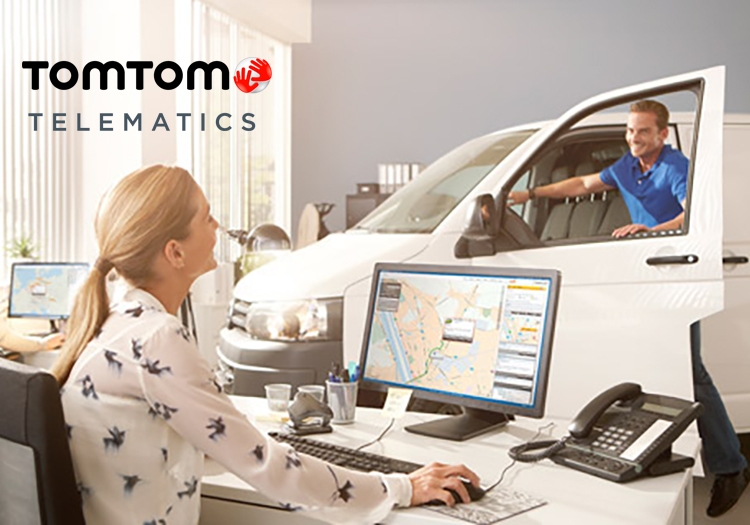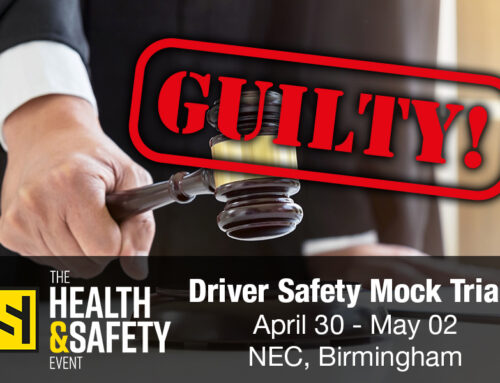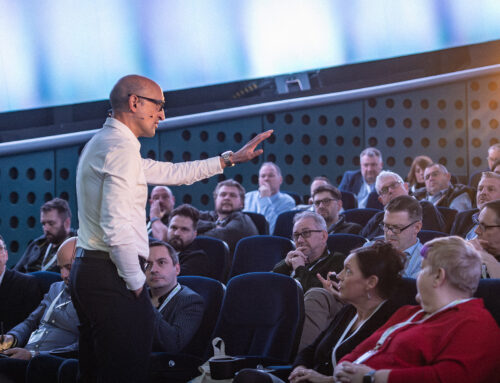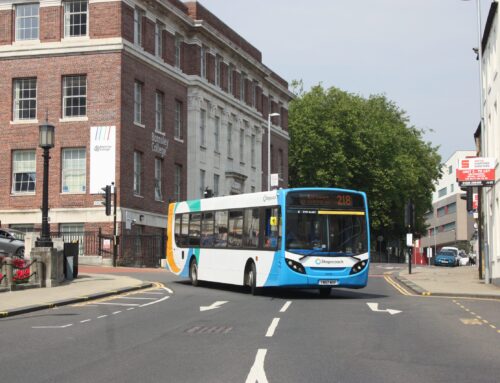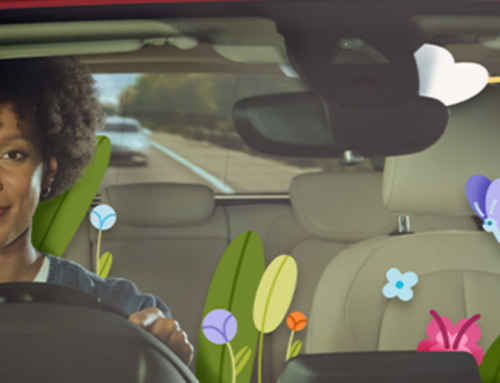TomTom Telematics hosted a fantastic one-day conference on the 4th July around the future of van fleets which I was privileged to be invited to. The team at TomTom had pulled together a wide range of expert speakers, each of which had some really valuable insights, for the many fleet operators in the audience, as to what trends could be affecting them 10 years from now. I’m going to ask some of the presenters to write articles about their presentations so we can share these insights in greater detail with you through the Driving for Better Business website.
As a brief taster though, this is what we learnt…
Dr James Bellini
Futurologist
James looked at how fast-advancing industrial technology would affect fleets. Manufacturers may start to be less reliant on cheap factories in the far east and find that consumer demand could increase the need for locally produced goods manufactured using the latest 3D and even 4D technology. This changes the landscape as far as logistics requirements are concerned.
The future will see a much smarter and better connected transport system with vehicles communicating with the infrastructure, as well as other vehicles, to reduce disruption and improve safety. Internet shopping is a fast-growing, but still relatively small part of the economy, and we’re constantly demanding increased customer service. As autonomous vehicles develop, we could start to see fleets of driverless vans operating 24/7 to satisfy this. Fleet operators will need to keep up with this technology to order to meet customer service and engagement requirements, as well as maximising operational efficiency.
Michael Gwilt
HDI Global
HDI Global is a fleet insurer pioneering a new model of fleet risk assessment. The traditional insurance models looks at the previous collision history of the fleet over 3 or 5 years and uses this as a basis to assess future risk. However, as is commonly said in the investment market, past performance is not necessarily a guide to the future, and this is what HDI believes.
Rather than looking at the past, HDI works to reduce client risk by improving driver behaviour through technology. HDI won’t insure any fleet that doesn’t install telematics – they know how well this approach works, and so look to work with fleets over a longer term, helping them implement the technology and maximise the benefits. Michael shared case studies from some of their clients to show just how effective this approach has been at reducing collisions and fleet insurance costs.
Andy Allen
BP Fuel Cards
Many employers that manage their work-related road risk well, and have seen reductions in collisions, have also seen significant improvements in fuel use – sometimes into the £millions for bigger fleets. With the transport sector using a staggering 60% of all liquid fuels, Andy looked at some of the trends in this vital sector.
While the developing world is chasing cheap energy, developed nations such as the UK are firmly targeting greener energy to reduce the impact their economy has on the environment. Legislation is often driven by populist sentiment rather than hard facts and, despite the advance in efficiency of Euro 6 engines, popular opinion is turning against diesels. With diesel sales growth typically outstripping petrol for many years following government encouragement, the trend is starting to revert back in favour of petrol as more cities look to impose entry taxes to diesel vehicles.
Mark Cartwright
FTA Van Excellence
Mark’s understanding of the van sector is unparalleled and as the van sector has grown from 3 million vans on the roads 10 years ago, to 4 million vans today, Mark identified three themes that he thinks will impact van fleet operators.
The first was ‘Responsiveness’ as the van industry now delivers almost 1 billion parcels a year. With the quantity expected to grow, along with customer service expectations, operators need to respond quickly to maximise efficiency. Mark identified two opportunities for improvement, such as looking at reverse logistics to maximise revenue by ensuring vans are earning their keep on both legs of the journey, and design and build services, where delivery drivers offer a ‘build and install’ service for some types of product to improve customer service.
The second theme was ‘Responsibility’. Van drivers and operators are not as highly regulated as HGV drivers, yet vans do 50% of all mileage in the UK and so the industry will need to self-regulate if it is to avoid government-imposed legislation. Operators also need to understand that their vans are the biggest threat to business continuity so well maintained and well managed vehicles are essential for the continued success and security of the business. Operators should also look at fitting limiters to all their vehicles as a way of improving overall driver compliance and to minimise the chance of reputation damage in the event of a collision.
The last theme was ‘Enforcement’. Marks sees an increasing trend of the DVSA and police stopping vehicles to check for defects, and removing unroadworthy vehicles which adds emphasis to the point above about operating responsibly.
George de Boer
TomTom Telematics
The theme for George’s presentation was ‘big data’ and how important this is in the development of autonomous and connected vehicles, as well as the logistics and delivery sectors. Cars, vans and trucks are increasing able to share this data to benefit other road users as it helps to provide accurate journey and delivery time information. This data allows customer updates to be automated freeing up drivers from the stress and potentially risky activity of having to call customers themselves. TomTom alone receives 1 billion pieces of data globally, every single hour, from the vehicles in its customers’ fleets allowing it to provide better information to all its users.
Looking to the future, telematics data will be able to help employers by analysing the data from each driver and helping with decisions on what training interventions may be needed or whether journey information says they would be more efficient in a petrol or hybrid vehicle. It will also increasingly help drivers by communicating with the environment to help drivers with things like locating the best available parking spot for their location.
Mark Lovett
Leaseplan
One thing the presentations today have shown is that there are too many topics for fleet managers to understand to the level they may need to. Mark thinks the leasing operators of the future are therefore going to have to become the focal point for fleet operators for all the associated services, products and guidance relating to these issues to provide the required level of customer service. This is going to include advising customers on meeting 24/7 customer demands, connectivity, fleet safety, environment concerns, legislation and vehicle compliance.
The second key theme that Mark looked at was the problem of inefficiency for the ‘last mile’ of delivery and the potential solutions logistics firms and van manufacturers are looking at. This included a UPS initiative to use e-bikes in urban areas to speed up delivery and minimise risk, improving CO2 levels and quality of life for residents. Mercedes-Benz vans are developing vehicles with fleets of smaller remote-controlled robo-vans or drones on board to deliver parcels from a centrally parked mother-van.
Prof Colin Tourick
Automotive Expert
Colin gave an inspired look at a slightly longer-term view of the vehicle market where the ownership model has completely changed in line with growth of the sharing economy. We were asked to imagine a world where nobody owned vehicles anymore but where manufacturers simply released their autonomous vehicles ‘into the wild’ financed by city investors.
If you think about the amount of time some of your vehicles, especially cars, stand idle then this approach makes complete sense. When someone needs a vehicle to make a trip for a meeting, of deliver a package, or even send a pallet of goods, users will simply order one from an app on their phone, and a car, van or truck will turn up to fulfil the requirement.
Robert Hitchcock
Berendsen
Berendsen is a commercial laundry service – but one with 680 vehicles comprising 200 vans and 480 trucks. With a massive fleet operating budget and a lack of measurement around what the fleet was up to, there was a huge appetite to improve the management of the fleet to improve safety and reduce costs.
Robert outlines how working with TomTom telematics had seen great improvements including a 50% reduction in driving ‘events’, a reduction in speeding events almost down to zero and a reduction in fuel consumption by over 10%. All of this led to reduction in the company’s fleet insurance premium of 16% at the next renewal.
The key points Robert raised were that 1) action needs to be taken based on accurate and comprehensive data, 2) clever implementation can lead to the generation of a strong and sustainable safety culture, and 3) improved management can bring significant improvements in both efficiency and safety.
Vicki Butler-Henderson
Racing Driver and TV Presenter
Vicki closed the conference with an entertaining look at how her early life led to a career as one of the very few female racing drivers, a TV presenter and road tester, and some of the exploits she got up to during her time with the Top Gear and Fifth Gear TV shows. Particularly entertaining was the video of her teaching TV Chef and car-nut James Martin how to chop cucumbers by drifting a Mercedes-Benz SLS supercar with a knife taped to its bonnet.
Thanks to Beverley, Tony and everyone else at TomTom for putting on such an excellent event and packing it with such informative and thought-provoking content. I can’t wait for the next one!

